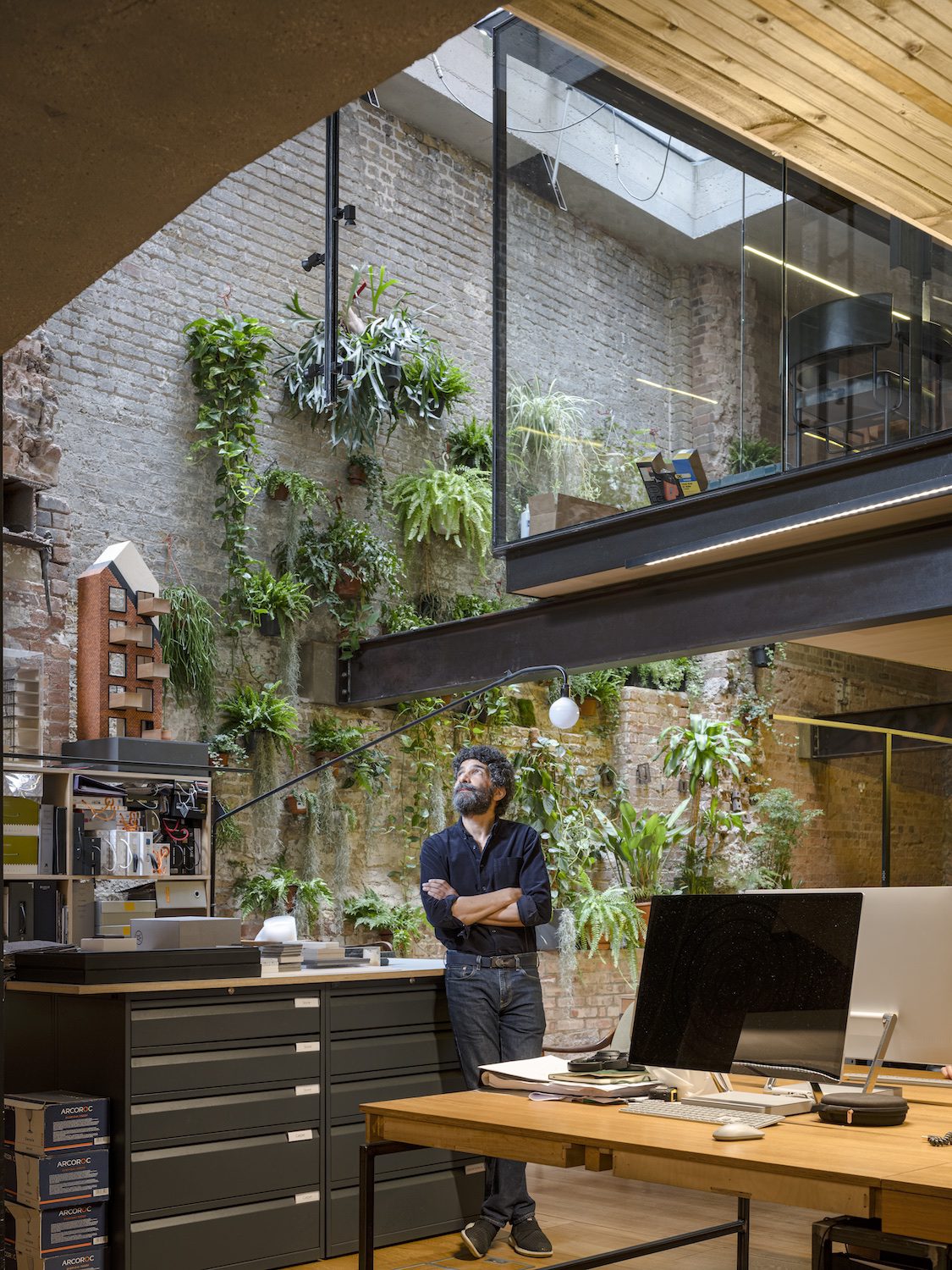The first in a new series of portraits of UK architects by Timothy Soar captures Amin Taha in a reflective mood at the end of lockdown.

“In Italy we say with crisis comes opportunity, what will you make of this opportunity?”
This was one of the late Luigi Snozzi’s rhetorical aphorisms, delivered through swirling smoke as we spent the evening in post-lecture meanderings (with translator). At the time, and perhaps because I was in the thick of it, I thought it cool, detached and possibly even cynical – a bit Harry Lime. All the same, there is an inescapable truth. Change will come whether you like it, and are part of it, or not.
When Tim Soar visited to take the photo, we’d just come out of the first lockdown and were both a little giddy and chatty, reflecting on what had already changed and what might be – not least, finding ourselves inadvertent campaigners for lower and negative embodied carbon construction. Without ideology, we were spending Zoom time running through the logic, where appropriate, of cheaper, faster structures in mass timber and stone. Clients and consultants get it. The last and more frustrating hurdle is contractors wedded to ‘supply chains’. This is understandable as it’s what they already know and, as one contractor asked us: “Why would we halve the time on site and hand the main package to a subcontractor when we can make 10 times the amount by keeping it in-house and in concrete?” – an argument sufficient to galvanise any of us to build up our arguments.
With more lockdown time to reflect, and with the help of structural engineer Webb Yates and sustainability consultant Eight Associates, we have developed an argument that illustrates how construction could actually become a carbon-capture industry instead of contributing a third of the world’s annual emissions. To quote Luigi Snozzi again: “Looking for flexibility? Just continue building in stone!”














